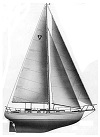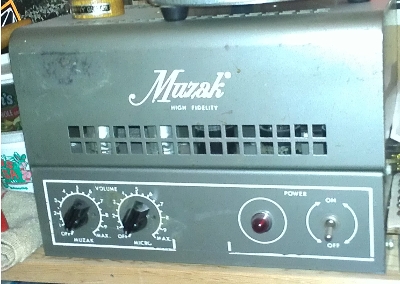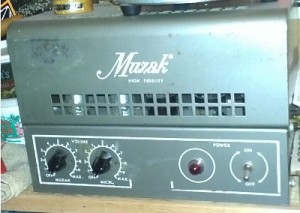

History of Muzak
My first experience with Muzak was in an elevator in Seattle. My mother had just remarked, “Now this is music!” while we listened to an instrumental of a Beatles song I was yelled at for listening to 2 days earlier. I didn’t appreciate Muzak until I started calling on them as a commercial rep in Seattle, and even then I had no idea of the accomplishments of the founder, George Owen Squier. In the course of researching audio history I was turned on to a well-researched history of Muzak (Thanks, Dean!) History of Muzak by Peter Blecha with excellent exhibits from the Nissen Collection. Peter wrote “Sonic Boom” which I gave a rave review. The Muzak article intrigued me and I delved into old articles to learn more.
The story begins with George Owen Squier (1865-1934.) Mr. Squier was a Major-General and Chief Signal Officer in the US Army. The July 14, 1919 issue of Scientific America introduces Mr. Squier and shows details of his patent to use living trees as antennae. All the details can be seen at Rex Research. To use a tree for an antenna, simply drive a nail 2/3 of the way up the tree, attach wire, and connect wire to receiver. Check this out, it is charming. British Patent Specification # 149,917 Improvements in & Relating to Radio Communication Systems.
His next patent was Multiplex Telephony and Telegraphy by Means of Electric Waves Guided by Wires. Here is a quoted description of any early test, posted by United States Early Radio History’s Thomas H. White.
“Having determined the necessary and sufficient conditions for the accomplishment of telegraphy and telephony by means of electric waves guided by wires upon local circuits, the next step was to apply these means and conditions to an actual commercial telephone cable line, the constants of which have been given above.
The machine was run at a frequency of 100,000 cycles per second. One wire of the telephone cable was connected to one terminal of the secondary of an air-core transformer, the other terminal being connected to earth.
At the receiving end of the line, which was the Signal Corps construction laboratory, at 1710 Pennsylvania Avenue, Washington, D. C., this wire was connected directly to earth through a “perikon” crystal detector, such as is well known in wireless telegraphy, and a high resistance telephone receiver of about 8,000 ohms was shunted around the crystal. In this preliminary experiment no attempt was made at tuning, either at the transmitting end or at the receiving end of the line.”
In 1922 Squier invented the method to send audio from phonograph records down power lines. Superimposing high-frequency radio signals on low-frequency lines, the sounds could be distributed without being broadcast. Up and running by 1934, if you lived in Cleveland, Ohio, you could pay $1.50 per month to receive 3 channels of audio entertainment, which included talk and news. By the end of that year Mr. Squier died, and Muzak had changed their strategy to focus on supplying music for businesses and restaurants. In 1936 they hit a homerun when they began selling to factories and worksites.
It started with music by wire, became “Muzak While You Work for Increased Efficiency” in the 1940’s. By the 1950’s it was “International Specialists in the Physiological Applications of Music.” It’s funny, music by wire morphed into productivity tools to motivate, stimulate, or calm workers (or customers) before becoming background music. Read Peter Blecha’s essay at Historylink.org for more well-researched and local details, including great stuff on Yesco and AEI. The supporting photos from the Nissen Collection capture an excellent glimpse of the people and products.
Muzak History: The Background Story on Background Music by Ethan Trex from Mentalfloss introduces Stimulus Progression, a trademarked process that helped tailor the music to the task. According to Ethan, “the presidential residence was wired for Muzak in 1953 during Dwight Eisenhower’s administration. (He wasn’t the biggest presidential fan, though; Lyndon Johnson actually owned Muzak’s Austin franchise during the 1950s.)”
Recordings for Muzak are now valued for capturing what were basically private performances by noted musicians. The Secret History of Muzak by Jesse Walker at Reason.com talks about recordings done by Fats Waller, Duke Ellington, and more. Check out this article to learn more and to hear examples of some of the artists.
Curious about the science behind musical mood enhancement? Read The Science of Muzak – Can background music really influence our buying decisions? by Brian Dunning to see results of several studies.
Enjoy! Oh, and by the way, it couldn’t have been Muzak in my elevator. Muzak didn’t do elevators.















you should follow up on the Muzak thread by also covering AEI, YesCo, and EMS, all of whom were foreground music pioneers, all of whom were located in Seattle.
3M also did elevator music. We had a contract with them at Seattle Center for their BGM service. The content came via a tape cartridge (bigger than a cassette), and musically, it was abhorrent.
–rick